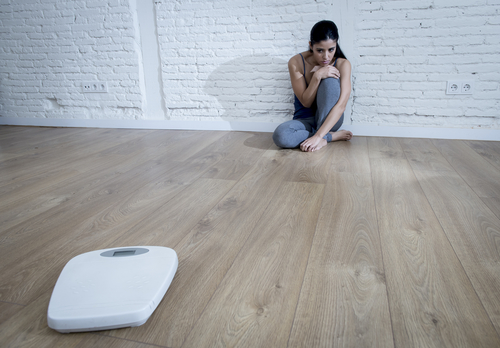The benefits of women’s residential rehab are far-reaching and can even be life-changing. From focusing on issues that are distinctly female-centric to healing in the company of like-minded peers, gender-specific residential treatment can revolutionize your long-term recovery. That said, understanding what to look for in women’s residential treatment programs can help you find a facility that truly meets your needs and sets you up for lasting success.
Next Steps
If you’re struggling with addiction, you don’t have to face it alone. At Casa Capri, we offer expert, women-centered care in a supportive and nurturing space—designed by women, for women. Our team is here to help you heal with purpose and connection.
Call our admissions team for a free, confidential chat—we’ll even check your insurance and estimate any costs upfront.
Understanding the Benefits of Women’s Residential Rehab
Women face distinctive challenges in recovery that require specialized care and attention. Women’s residential treatment programs create a safe environment where women can focus on healing without distraction. The benefits of women’s residential rehab include:
- Deeper healing through trauma-informed care
- Residential substance abuse treatment
- Stronger peer connections with women sharing similar experiences
- Treatment for relationship dynamics and parenting concerns
- Gender-specific health services and support
- Safe spaces to discuss sensitive topics openly
Research consistently shows that women often respond better to treatment when they’re in a setting designed specifically for their needs.
Evaluating Women’s Residential Treatment Programs
Women’s residential treatment programs each have their own philosophy and approach to recovery. Look for facilities that offer evidence-based therapies combined with holistic wellness practices, including individual therapy, group counseling, and specialized modalities like trauma-focused therapy or EMBT. A quality program should conduct thorough assessments and create personalized treatment plans rather than using a one-size-fits-all approach.
Assessing Staff Qualifications and Expertise
The quality of care you receive depends heavily on the staff providing it. Research the credentials of therapists, counselors, and medical professionals at each facility, looking for licensed clinicians with specialized training in addiction treatment and women’s mental health. Consider whether the facility employs female therapists, as many women feel more comfortable discussing sensitive topics with female providers.

Examining Location and Environment for Gender-Specific Residential Treatment
Location matters. I can impact your recovery results more than you might think when selecting a gender-specific residential treatment program. Some women benefit from getting away from their home environment to focus on recovery without daily triggers, while others prefer staying closer to family and support systems. Tour the facility if possible, paying attention to cleanliness, privacy, and amenities that support wellness, like outdoor spaces or fitness facilities.
Reviewing Program Length and Structure
Treatment duration is different for every woman. There are 30-day programs or longer-term options that last 90 days or more. Research consistently shows that longer treatment stays lead to better outcomes. Therefore, evaluate the level of structure you need and ensure the program offers sufficient time to address underlying issues while building sustainable recovery skills.
Investigating Specialized Services for Women
The most effective women’s residential treatment center should deliver caring, 360-degree services that address the whole woman (not just her symptoms), providing a holistic view of her health and wellness. Look for programs that provide:
- Trauma-informed care for addressing past abuse or violence
- Reproductive health services and pregnancy support
- Childcare resources or family therapy options
- Treatment for co-occurring eating disorders
- Treatment of depression and addiction in women
- Workshops on healthy relationships and boundaries
These specialized services demonstrate the benefits of women’s residential rehab in terms of offering flexible, comprehensive, attentive care that connects to the heart of every woman’s recovery goals.

Verifying Insurance Coverage and Costs
Financial considerations are practical realities when choosing treatment. Contact potential facilities to verify they accept your insurance and understand what’s covered, including out-of-pocket costs and payment plans. Many quality treatment centers work with families to make care accessible, so don’t let cost be the only deciding factor.
Understanding Women’s Rehab vs Co-ed Rehab
Ponder the uncommon advantages of gender-specific programs. For instance, women-only facilities create environments where you can address sensitive topics without distraction and connect with peers facing similar challenges. Furthermore, women’s rehab vs co-ed rehab offers residents the opportunity to look inward, reflect, and focus on recovery in more profound ways than mixed-gender facilities because, while all different, most women grow stronger when uniting together for common goals (including recovery).
Next Steps
If you’re struggling with addiction, you don’t have to face it alone. At Casa Capri, we offer expert, women-centered care in a supportive and nurturing space—designed by women, for women. Our team is here to help you heal with purpose and connection.
Call our admissions team for a free, confidential chat—we’ll even check your insurance and estimate any costs upfront.
FAQs About Choosing Women’s Residential Treatment Centers
What makes women's residential treatment different from co-ed programs?
Women’s residential programs allow women to expand and broaden themselves through mutual support. It’s an environment focused exclusively on issues affecting women in recovery, addressing concerns like trauma from domestic violence, maternal mental health, and body image issues. Without the distraction of co-ed settings, women often feel safer opening up and forming deeper therapeutic relationships.
How long should I plan to stay in residential treatment?
Most experts recommend at least 90 days of residential treatment for the best outcomes. The benefits of women’s residential rehab compound over time as you work through underlying issues and build strong recovery skills. Discuss your specific needs with treatment professionals to determine the right timeline for your situation.
Can I bring my children to women's residential treatment?
One of the benefits of women’s residential rehab is that some programs offer accommodations for mothers with children, while others provide resources to help arrange childcare. Ask each facility about their policies regarding children and what support services they offer for mothers, including family therapy and parenting education.
What should I look for during a facility tour?
Pay attention to the overall atmosphere, cleanliness, and whether the space feels welcoming and safe. Observe the bedroom accommodations, common areas, and therapy spaces, and note how staff interact with residents. Trust your instincts about whether you could see yourself healing in that environment.
How do I know if a treatment center is reputable?
Research the usual credentials first, such as proper licensing and accreditation from recognized organizations. Also, review all feedback (both positive and negative reviews) from former clients. You can also research the facility’s history and look for any complaints or violations that have been reported. Reputable centers are transparent about their treatment approaches, staff qualifications, and outcomes, and are willing to answer your questions.



